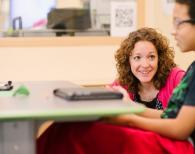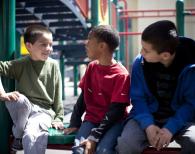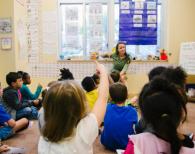The final domain of identity safety is caring classroom environments, where social skills are taught and practiced to help students care for one another in the context of an emotionally and physically safe classroom.
center for the collaborative classroom

Positive classroom relationships are the foundation of an identity safe classroom. You cannot create a sense of identity safety without a continuous focus on how the students are feeling and treating one another. Positive classroom relationships are based on trusting, positive interactions with the teacher and among the students.

Many teachers believe that the best way to live Dr. Martin Luther King’s dream is to be colorblind, to ignore the differences among children. And yet, Dr. King did not really intend to make differences disappear. When teachers ignore differences in an attempt to be colorblind, classrooms are not identity safe. Students from negatively stereotyped groups can feel stereotype threat—a sense of not belonging, or not being seen as capable. These students may worry that they will be judged or treated according to a negative stereotype, or that they might do something to inadvertently confirm it.

Child-centered teaching prioritizes the students’ perspectives in all classroom activities and interactions. We met one teacher who used a literal change of perspective to get in a child-centered frame of mind: Each morning before the kids came in, she would sit in the chair of a different student and look around the classroom, imagining what would it feel like to be that student.

The goal of most American teachers is to successfully educate all students, but too many black and Latino students underperform academically and fail to meet their potential. Educating all students well is not only important for the students themselves, but for our nation as a whole. We cannot have a just and democratic society without fully educated citizens.
